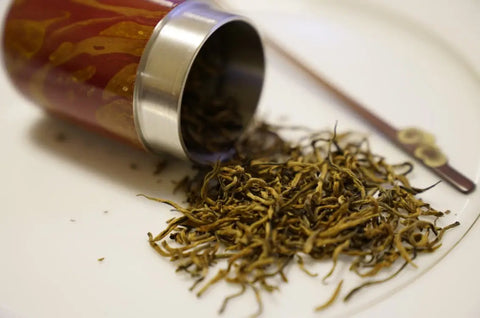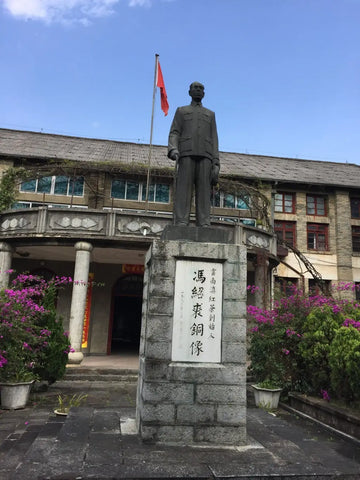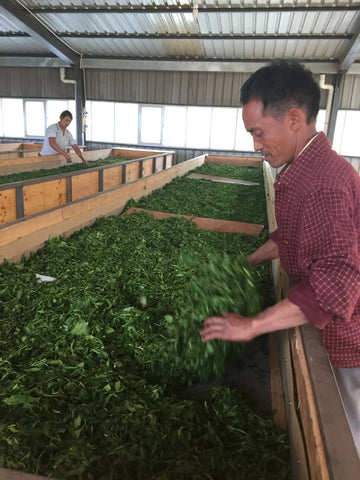
The Legacy of Yunnan Gongfu Black Tea: Born from the Shadows of WWII
Yunnan Gongfu Black Tea, also known as "Dian Hong" in Chinese, stands as the quintessential example of large-leaf black teas. Renowned for its signature golden tea hairs, fragrant floral notes, and a bold yet smooth taste, it has captivated tea lovers around the world. Interestingly, despite China's long and storied tea-making history, this tea didn’t emerge until the 20th century. It was first crafted in 1938 by the visionary tea master and scholar Feng Shao Qiou during the turbulent years of World War II.

At that time, China’s key tea-producing regions had fallen under Japanese occupation, disrupting the production of beloved teas like Keemun and Lapsang Souchong. With tea exports halted, China faced an economic crisis, as the need for trade was more urgent than ever. In response, the China Zhong Cha Tea Company owned by the Kuomintang government sent a small team, led by Mr. Feng, to the remote southwestern province of Yunnan, a region bordering Myanmar and Laos that had never before produced black tea.
Yunnan’s vast fields of large-leaf varietal tea trees and its relatively safe distance from the war made it an ideal location for tea cultivation. After conducting a thorough study of the land and the trees, Mr. Feng chose the Fengqing region to launch his bold experiment. He adopted the "one bud, two leaves" plucking method, traditionally used for high-quality teas, to work with the large-leaf varietals. Through a series of trials and refinements, Feng and his team succeeded in creating a new type of black tea—one with a bright reddish liquor, a captivating fragrance, and a bold, full-bodied flavor. This tea was a harmonious blend of the best characteristics of Keemun and Assam, a unique creation born from necessity but destined for global acclaim.

Later in 1938, the Chinese government took decisive action to solidify Yunnan’s place in the global tea trade by establishing a tea factory dedicated to producing Yunnan black tea. Their plan was to transport the tea through Vietnam and Myanmar, ultimately reaching international markets. By 1939, the first batch of Yunnan black tea was ready for export. Packaged in traditional bamboo baskets, it made its way to Hong Kong, where it was repackaged into sleek aluminum tea jars and shipped to Britain. The reception was immediate and enthusiastic—this new tea became an instant hit, fetching a record-breaking 800 pennies per pound, the highest price ever for black tea at the time.


Above, photos taken by Victoria Wu
Yunnan black tea quickly became one of China’s most important export commodities, playing a crucial role in the nation’s efforts during World War II. It was traded for vital supplies—arms, equipment, and other goods that China desperately needed to survive the war. In the 1950s, Dian Hong primarily found its way to the Soviet Union and, later, Britain. It is said that one ton of Yunnan black tea could be exchanged for ten tons of steel, reflecting its immense value during that time.
Under the control of the new Chinese government, the export of Yunnan black tea was strictly managed. It was reserved for international trade, used to secure essential goods needed to rebuild a war-torn China and develop its fledgling industries. It wasn’t until the 1980s that the tea became available for domestic consumption, opening the door for Chinese citizens to enjoy the unique flavor of their own national treasure. Since then, Yunnan black tea has flourished in popularity, establishing itself as one of China’s most iconic black tea varietals.
In 1986, the tea reached new heights when Queen Elizabeth II visited Kunming, the capital of Yunnan province, and was presented with a super-grade Yunnan Gongfu black tea as a diplomatic gift. Today, Yunnan black tea enjoys a prestigious global reputation, with its distinctive flavor and rich history making it one of the world’s most beloved black teas.
